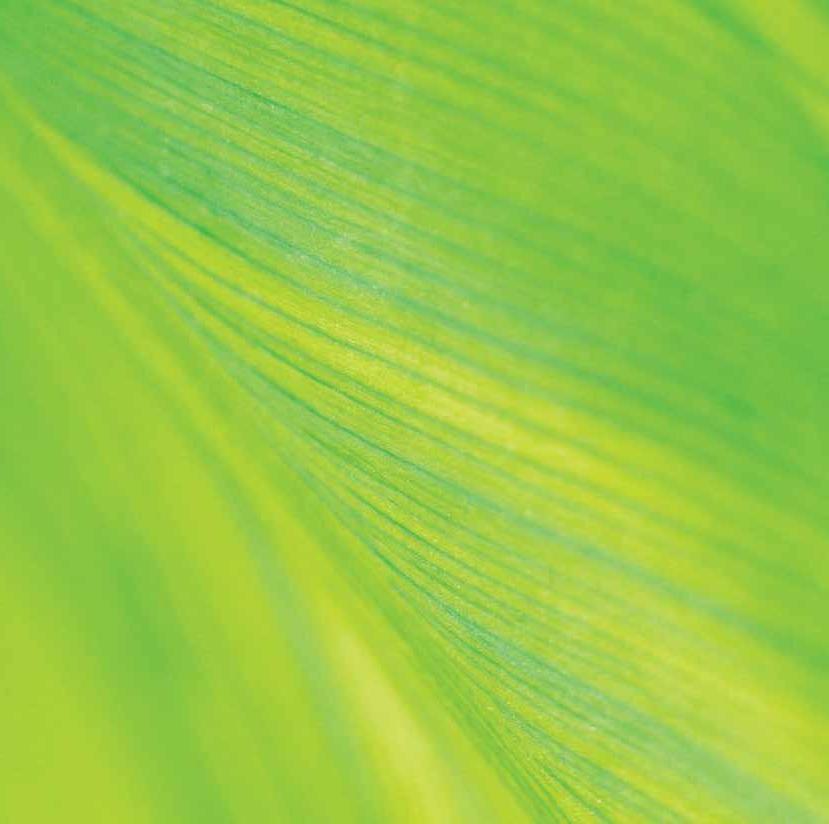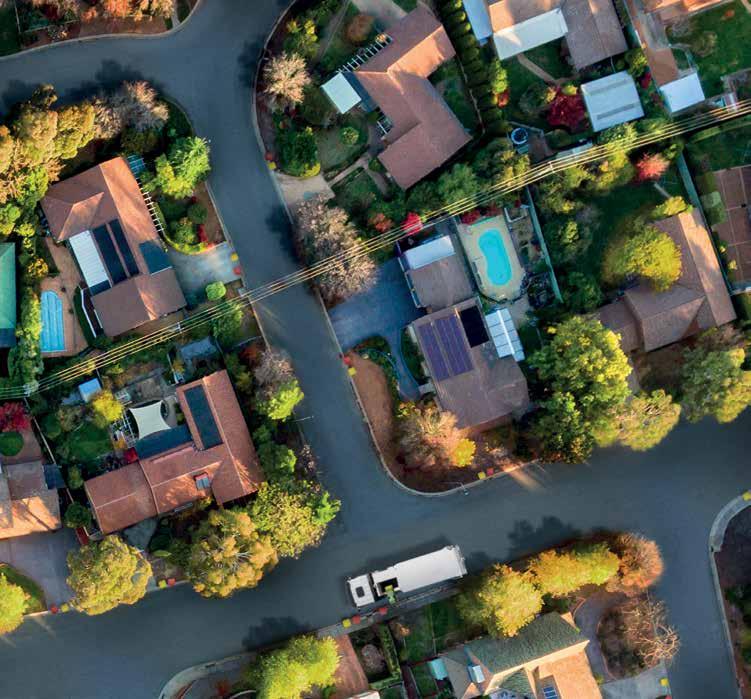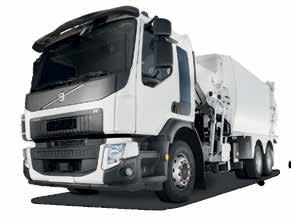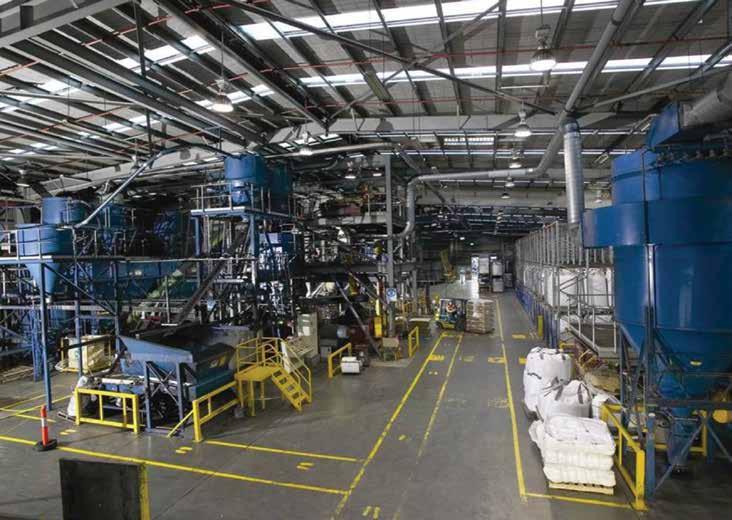
4 minute read
VEOLIA SETS WTE BENCHMARK

Streets ahead VOLVO FE DUAL CONTROL


There are three simple reasons we believe this is Australia’s best waste truck. The Volvo FE Dual Control is Safer, Cleaner and Quieter. Careful design and clever ergonomics add to the safety dynamic of this world leading waste truck. The FE Euro 6 is built to deliver maximum environmental care and is engineered to be significantly quieter thanks to our unique Volvo Engine Brake system and lower engine noise. So when you are considering your next waste truck, make sure you choose the safest, cleanest, quietest option available. For more information visit volvotrucks.com.au
Fuelling the market
WASTE MANAGEMENT REVIEW SPEAKS WITH KEY INDUSTRY STAKEHOLDERS ABOUT THE POTENTIAL TYREDERIVED FUEL FLOW-ON EFFECTS OF THE COUNCIL OF AUSTRALIAN GOVERNMENTS’ PROPOSED EXPORT BAN.
In early August, the Council of Australian Governments (COAG) released a communique detailing its decision to ban the export of waste materials including plastic, paper, glass and tyres.
Specifics of the ban have not yet been released, with government stating that it would develop a ban timeline and action plan in due course. Despite this, industry responses have been swift and overwhelmingly positive, with particular focus given to the potential waste-to-energy flow-on effects of a ban on tyre exports.
Gayle Sloan, Waste Management and Resource Recovery Association of Australia (WMRR) CEO, says Australia has a robust and sustainable non-baling tyre recycling industry, which processes roughly 23 million used tyre units per annum.
“A ban on the export of whole-baled tyres will further drive the industry, which will create Australian jobs while ensuring human and environmental health are protected,” she says.
Pete Smigel, Australian Council of Recycling CEO, says consumers are increasingly demanding sustainable end-of-life disposal and recycling of products that offer sustainable environmental and human health outcomes.
“Australia has a great opportunity to develop a strong, sustainable and profitable tyre recycling industry that delivers significant environmental benefits and as well as job creation across the new manufacturing industry,” Pete says.
“It’s imperative this is supported by responsible government policy, and the COAG communique is a great step towards that.”
Tyrecycle, one of Australia’s largest collectors and recyclers of end-of-life tyres, operates numerous collection and processing facilities across the country, including Australia’s largest crumbing plant based at Somerton in Melbourne. It also has full chain-ofcustody reporting.
Jim Fairweather, Tyrecycle CEO, says COAG’s signalled intention to ban the export of waste tyres is a win for the environment and the circular economy.
“The proposed ban presents the best opportunity to turn all endof-life waste tyres in Australia into value-added commodities such as rubber crumb, rubber granule, tyrederived fuel (TDF) and high-tensile steel, creating more sustainable jobs in Australia,” he says.
“A ban on the export of waste tyres should include both whole-baled tyres, which are sent unprocessed to countries such as India and Malaysia, as well as casings from old truck tyres
Tyrecycle has welcomed COAG’s intention to ban the export of waste tyres.

sent into overseas markets for use as seconds or in retreading.”
Jim says these elements go hand-inhand, given the ban on whole-baled tyres will require the establishment and growth of new markets for repurposed tyre-derived products.
Australia currently exports
approximately 70,000 tonnes of whole-baled tyres per annum, which are then used in open burning as a fuel to heat drying kilns and in lowgrade pyrolysis plants.
Rob Kelman, Australian Tyre Recyclers Association (ATRA) Executive Officer, says operations like this are controversial, do not comply with environmental, health and worker regulations and are associated with high levels of pollution. ATRA members agreed to ban the practice of exporting whole-baled tyres in 2014, due to poor environmental outcomes and a direct association with water borne diseases.
“The World Health Organization specifically identifies international movement of whole tyres as a key factor in the increase in Dengue incidence,” Rob says.
Australia’s tyre recycling sector is largely dominated by traditional recycling methods, which use a series of shredders, screens and granulators to separate waste tyres into commodities.
Jim says these commodities, which are valued commensurate with their level of refinement, are used as raw material in the manufacture of new products such as soft fall surfaces and asphalt, as well as civil work applications such as roads and infrastructure. “Waste tyres are also used in TDF – a globally traded commodity, which fuels sophisticated, high-energy manufacturing environments and power generation plants overseas,” Jim explains.
“The technology is proven, and TDF has excellent environmental credentials that include a reduction in landfill, improved emissions and reduced use of fossil fuels.”
Jim adds that for every tonne of TDF used, one tonne of CO2 is displaced.
“It burns cleaner than coal and has twice the energy value of brown coal,” he explains.
“The global TDF market, which includes South Korea and Japan, is hungry for more and could easily consume all of Australia’s waste tyres as TDF, but there should also be a gradual push to increase the domestic uptake of TDF, most likely in cement kilns.”





